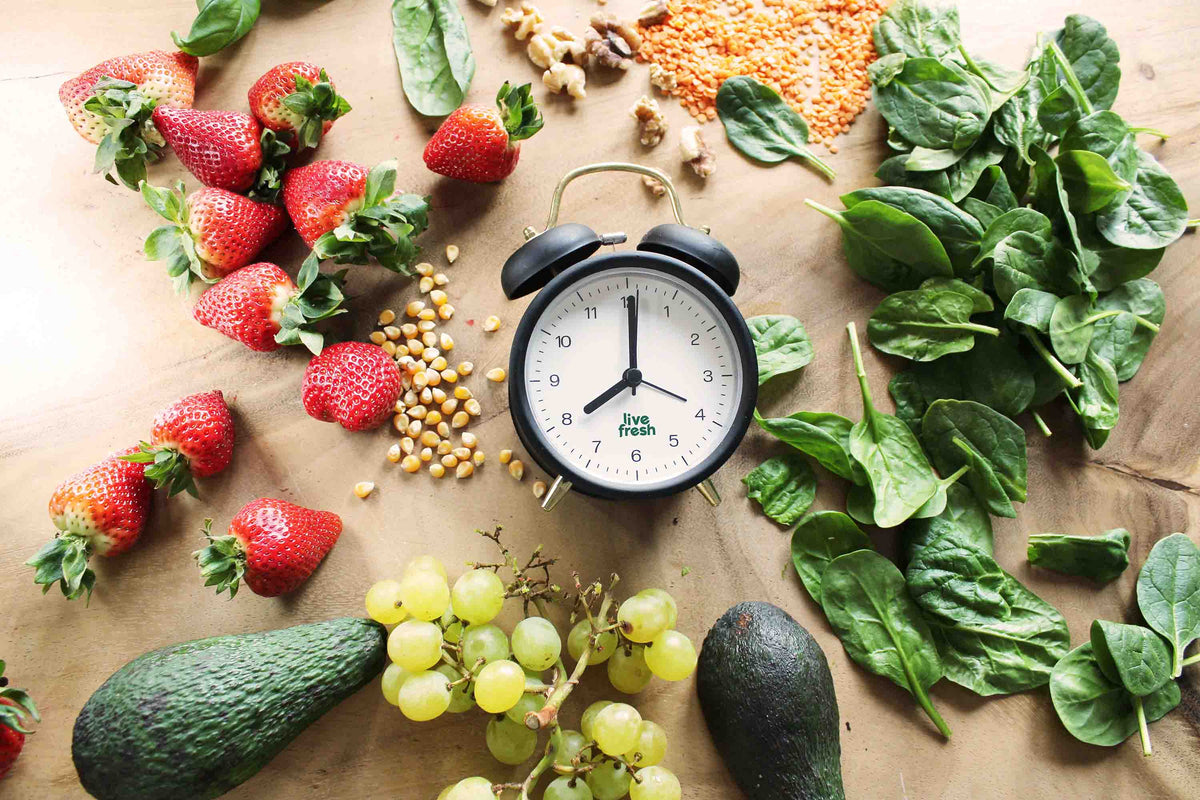What can I eat during intermittent fasting?
During fasting, calorie-containing foods and drinks are avoided. However, make sure you drink enough. Preferably water and unsweetened tea or coffee. Artificial flavors and sweeteners should be avoided. Green tea contains catechins, which are said to have an appetite-suppressing effect.
To maximize the positive effects of the Intermittent fasting you should make sure you eat a balanced and varied diet during the so-called "eating phase". Plenty of colorful vegetables with a source of protein and high-quality fats form the basis here. Pay particular attention to your protein requirements (see section 1.4). You should avoid ready meals and sweets as much as possible. For a healthy nutrition here you will find many delicious and healthy Recipes and others Information on.
What can I drink during intermittent fasting?
During the so-called "fasting window" you can drink water, unsweetened tea or black coffee. If you feel the need for something salty, you could also drink broth. During the "eating phase" you can also drink other beverages with your meals. Between meals, you should again choose drinks that are as calorie-free as possible to keep your blood sugar levels low.
Can I drink coffee during intermittent fasting?
During the Intermittent fasting you can also Coffee drink. However, to ensure that your fasting is not interrupted, it should be black, i.e. without milk or sugar. For optimal sleep quality, you should drink your last coffee before 2 pm if possible.
How effective is 16 hours of fasting?
The 16:8 method is very effective in many ways. The health benefits are based on autophagy, the cell renewal that is triggered by it. In addition, the insulin level is low, which Diabetes is beneficial and can also reduce inflammation. It also relieves the gastrointestinal tract. However, the protein requirement for the whole day should still be met so that your body has enough building materials available and cravings are prevented. If your total calorie balance remains below your daily requirement, it is also suitable for weight loss.
How much weight can I lose with intermittent fasting?
How much weight you lose depends on the individual. Severe overweight that has existed for a long time or medication and metabolic diseases such as Diabetes, the Lose weight a little more difficult and progress more slowly. In most cases, a weight plateau is reached after some time of weight loss and you no longer lose any more weight. It can then be helpful if you change your fasting regimen, i.e. the fasting method or your diet during the eating phase.
How long should you do intermittent fasting?
How long you intermittent fasting is up to you and your well-being. The 16:8 or the 5:2 variant is suitable for doing this on a permanent basis. The 1:1 method should be used more as an introduction to the other Intermittent fasting methods or a healthy change in diet, as a very large calorie deficit is achieved.
Which intermittent fasting method is suitable for beginners?
If you have no previous experience of fasting, the 16:8 method is a good way to start. You can start by skipping dinner 1-2 days a week. After a few weeks, you can then slowly increase the number of fasting days or switch to the 5:2 or 1:1 method. However, if you have already been on a juice cleanse from LiveFresh you can also start directly with the 5:2 or 1:1 method.
How many meals during intermittent fasting?
At the Intermittent fasting after the 16:8 method you can eat 2-3 meals in the 8-hour eating window. It is important that you still cover your protein requirements during the day and then spread them over the remaining meals (see section 1.4).
What side effects can occur with intermittent fasting?
You may feel hungry, especially at the beginning. However, if you get used to the fasting rhythm, drink enough and follow our other tips below (see question: What can I do if I am hungry during intermittent fasting?), then your feeling of hunger should soon improve. You may also experience occasional headaches or tiredness, especially if you have not drunk enough. In most cases, broth or a glass of water with a pinch of salt will help to balance your electrolyte levels. If you feel stressed by fasting, you may not have chosen the right method or it simply doesn't fit into your everyday life. Take another look at the section 5. Who is intermittent fasting not suitable for? after. Women in particular should be very careful here and choose the right method to avoid upsetting their hormone balance.
What can I do if I am hungry during intermittent fasting?
The feeling of hunger does not usually last long, but comes in waves and then disappears again. It helps to keep yourself busy during the fasting phases. During a hectic working day, you won't have much time to think about food.
There are also natural remedies that can suppress hunger:
- WaterA glass of water first thing in the morning can curb the feeling of hunger. Sparkling mineral water can provide relief from loud stomach noises
- Green teaIt contains antioxidants that can stimulate the metabolism, but also catechins that curb the appetite.
- CinnamonStudies have shown that cinnamon slows down the digestive process and suppresses hunger. It can also have a positive effect on blood sugar. Cinnamon can be added very well to tea or coffee
- CoffeeThe antioxidants in coffee have been shown in studies to have a hunger-reducing effect. In addition, the caffeine in coffee can stimulate the metabolism and fat burning.









